London’s revolutionary kiss-in
Ted Brown is a black LGBT rights pioneer who helped organise the UK’s first Gay Pride march in 1972, featuring a mass ‘kiss-in’ that, at the time, would have been considered gross indecency, which was against the law.
When Brown realised he was gay, homosexuality was illegal in Britain – the only person he came out to was his mother. She cried and told him he’d have to battle not just racism but homophobia too; both were rife in society at the time. At one point Brown felt so dismal about his future that he considered taking his own life. But inspired by the Stonewall Riots, he found hope in Britain’s Gay Liberation Front and became a key figure in fighting bigotry in the UK.
In this interview with the BBC he tells his moving life story.

Credit: Courtesy of Ted Brown
Ted Brown: the man who held a mass kiss-in and made history
Forty nine years ago today (on 1 July 1972) Ted Brown walked through central London, stopped at Trafalgar Square for a kiss – and made history. He was at the event he had helped to organise, the UK’s first official Gay Pride, in which more than 2,000 people marched through the capital before holding a mass kiss-in.
Half a century later, his memories of the day are euphoric. “It was amazing,” he says. “I felt that we were continuing the legacy of the civil rights march.” That day he took photographs of buoyant butch lesbians and men in drag, crowding around the Trafalgar Square lions and fountains, draping them with banners and demanding liberation for all.
Organised by the Gay Liberation Front (GLF), the London march followed the Stonewall uprising and first Pride parade in the US. “The basic principle of the GLF was that one should come out to show people who we actually are,” says Brown.
His work with the GLF, his efforts to improve the treatment and representation of LGBT people in the media, and his battle against abusive policing make him a key figure in both British civil rights history and LGBT history. He was one of the few Black people in the first Pride march, and remembers it being composed of “mostly young people, mostly white, inevitably, and mostly hippies. It was only five years after 1967, the Summer of Love and the peak of the hippy movement.”
This was not the GLF’s first march for gay rights. In 1970, Brown was at Highbury Fields, north London, to protest against the arrest of Louis Eakes, the chairman of the Young Liberals. Eakes had been arrested for cruising following a “pretty police” sting – where police officers posed as would-be sex partners. The following year “our youth group marched against the unequal age of consent laws”, says Brown. At the time some men were paying a heavy price for this law. “There was one man who was 21 and his boyfriend was 19, and he got a 14-year sentence. And we managed to campaign and get an appeal and get it reduced to something like three years.”
This nascent gay liberation movement was intrinsically intertwined with the civil rights movement for racial justice, Brown says. In fact, the UK branch of the GLF was formed after the LSE students Aubrey Walter and Bob Mellors met at a September 1970 conference in Philadelphia facilitated by the Black Panther Movement. And all of its demonstrations were coalitions with other liberation groups. “One of the very first GLF marches,” says Brown, “was held in Notting Hill Gate, and run by people from the Mangrove” – the Caribbean restaurant on All Saints Road, Notting Hill, which became a hub of Black organising activity, and was the subject of a recent film by the director Steve McQueen. The GLF was also joined by “people who had been involved in the miners’ strikes and the [radical left group] Angry Brigade, and had been closeted in those campaigns”, says Brown. Many of these groups marched alongside the GLF at the 1972 Pride demonstration.
Brown, 71, was born in New York to Jamaican parents – his mother was a pharmacist and his father a garage attendant. By the time he was born his parents were no longer together and their relationship was frighteningly turbulent. When Dorothy Walker was pregnant with Brown in 1949, his father was determined to keep her away from Brown’s older sister, Jewel. One day he invited Walker to the new home he was sharing with an American girlfriend and gave her a cup of coffee, which he had laced with drugs. He then called the hospital, says Brown, telling them: “This woman is crazy.” Walker was detained in Pilgrim State hospital in Brentwood, New York, where Brown was born on 1 February 1950. “Some people say that explains a lot,” he laughs.
When she was released, Brown and his mother moved to Harlem, where he attended the Catholic Our Lady of Victory school – the only place where he could meet up with Jewel. The divorce courts had given his parents shared custody of his sister, but his father would stop his mother from picking her up at weekends. “I’ve met my sister since, recently, and she explained how they would actually hide her in the laundry in their home and say she wasn’t there. They told my sister that she wasn’t wanted by our mother.”
Despite this parental animosity, Brown describes a happy life in Harlem, surrounded by other Black children. “I remember a lot of games we used to play, I remember loving the streets. We had a lot of basketball courts.” He was also aware of the cultural legacy being built around him. “Black sports people were having great achievements, particularly people like the Harlem Globetrotters. They, along with musical artists like Billie Holiday, Sarah Vaughan, Billy Eckstine, Ella Fitzgerald, were achieving great fame and positive images for the Black community.”

Yet he was under no illusions that he could ever be safe in a world where anti-Black violence was so visible. He was five when the 14-year-old Emmett Till was lynched in Mississippi, and remembers television coverage of the child’s murder. Even though he didn’t live in the south, the young Brown was terrified it could happen to him. “We were being warned about white people in the streets, being told by our parents to be very careful. Even in Harlem, although it was a predominantly Black area, we still had incidents of white people coming into the area and behaving irresponsibly.”
A year later Brown and his mother were hit by the full force of a more legal form of discrimination. His mother was involved with the National Association for the Advancement of Colored People – and was listed by the FBI as a “troublemaker”. On 23 April 1956, Walker, Brown and his younger half-sister, Jackie, were deported to Jamaica. The official documentation for her removal states that Walker was “a person of poor character, having been involved in disturbances instigated by the NAACP”.
Walker’s partner at the time, Jackie’s father, was a white Jewish man and could not relocate with them; he died before the pair could be reunited. Brown’s biological father was due to be deported too but, unbeknown to Brown and his family, he had married his American girlfriend. “Literally, as we were going up the steps to the SS Arcadia, the ship that was going to take us to Jamaica, he whipped out his marriage certificate, which gave him American citizenship. And that saved him.” It was the last time Brown would see his father.
While for his mother it must have been a traumatic experience, Brown was less troubled. “For me, the deportation just seemed like an adventure. I was going on a ship, to a country that I’d never seen before.” And childhood in Jamaica was fun. “I was running barefoot in the streets. A lot of Jamaica, although poor, was very beautiful.” Yet even here he could not escape prejudice. His mother found a job as a pharmacist in Canada, and he and his younger sister were left in Jamaica. But the family members who were happy enough to take in his sister would not accept him. “We didn’t have to guess that they were keeping my sister because she had light skin – they actually told us. Our family said: ‘We’re not taking Ted – he’s too dark.’”
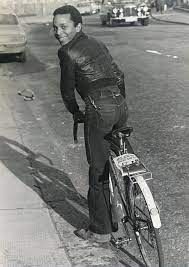
When his mother could support them, the children joined her in Canada, and then together they took a ship to the UK in 1959. Coming hot on the heels of the first Windrush arrivals, his mother, now pregnant with Brown’s younger half-brother, Bobby, had a single suitcase and two young children. Yet as they looked for accommodation the signs they saw said: “No Blacks, no dogs, no Irish”. The family were forced to sleep rough for a few weeks, before they found a room in Brixton, south London, with peeling wallpaper, warmed only by a small paraffin heater. Later, when Brown was about 12, they moved to Deptford in south-east London, but left for Greenwich after the National Front pushed dog waste through their letterboxes and broke their windows.
It took a film, Carmen Jones, to make Brown realise he was gay. “There’s a scene where Harry Belafonte plays Joe, and he tries to push a Jeep out of this creek. And he’s all muscles. And my little heart was beating.” The thrill of this epiphany at 13 was soon clouded by Brown’s sense of isolation. But he began to suspect that his best friend, another young Black boy, might feel the same way. “We didn’t have sex or anything. I just got a feeling. There were various things about our behaviours.” Brown was never certain, but the boy’s death by suicide at age 15 left him distraught. “I kind of understood, because later, partly due to depression about what had happened to him, I felt very much the same way.”
His friend’s death drove him to come out to his mother. “I had to tell somebody. And she cried on my shoulder. I cried on her shoulder. She said: ‘Well, you’re going to have to deal with the racism, and also society’s hostility to homosexuals.’” Brown was initially stunned at his mother receiving the news with nothing but love and concern, but she told him about hearing the speeches of the gay civil rights activist Bayard Rustin, describing the civil rights movement as a coalition that advocated the liberation of gays and women, too.
Not long afterwards, on 22 November 1965, Brown’s mother died. She was just 50. She had a concurrent heart and asthma attack in front of Brown and his siblings. “I tried to give her mouth-to-mouth resuscitation and ran out to the telephone box to call the ambulance, but they didn’t turn up for 20 minutes. By that time she was gone.” He credits her with imbuing him with the spirit of revolutionary love and rejection of bigotry.
Due to the age difference, Brown and his siblings were sent to separate children’s homes following his mother’s death, and his isolation deepened. He recalls a school trip to Brighton where other children spoke of their ambitions for the future – the dream job, marriage and kids. Ted could not see any of this for himself. “I had no idea what I was going to do. I didn’t know any other gay people.”
When he returned to the children’s home that day, he decided he would end his life. But he was saved by the realisation that his younger brother and sister would have no one to keep an eye on them. “I was looking at it from the point of view of when I’m 25, when I’m 30, if I don’t meet anybody, or my younger brother and sister find out I’m a homosexual, I’ll be alone.”
Then, at 19, he experienced a watershed moment. It was 1969 and he still knew no one who was openly gay, but he came across a news report on the Stonewall riots. The report explained how “some queens with handbags were fighting with the police at a bar in New York,” he says. To Brown just hearing about other gay men taking action together was incredible. “I remember doing cartwheels all around the living room.”
The next year, in November, he went to watch the landmark gay film Boys in the Band. Outside, members of the GLF were leafleting. Brown went along to the group’s third meeting, at the LSE, and remembers how exciting it felt. “I’d never been in a room with other homosexuals who were angry about the way that we were being treated, and wanting to fight back about it,” he says.
Finding the GLF allowed him to see a future for himself for the first time, while activist spaces gave him a clear purpose, friendships and lovers. After his early years in the GLF, Brown set up his own organising collectives. He led the Black section of Galop, the Gay London Police Monitoring Group, set up in June 1982 to address homophobic policing, but left after a furious confrontation with a white gay man in the organisation who used a racial slur and told a joke about how white girls only went out with Black boys “to get their handbags back”. Brown went to work for Lewisham Action on Policing, set up following the New Cross fire in January 1981.
Brown also founded Black Lesbians and Gays Against Media Homophobia, and in 1990 began a year-long struggle against Black British tabloid the Voice, to force an apology for its homophobic coverage of the footballer Justin Fashanu. On 29 October 1991 the paper published a full-page “right to reply” – an article by Brown entitled: “Fighting racism and homophobia – a united battle”.
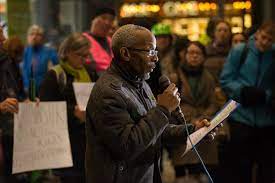
The group also campaigned to remove “murder music” by dancehall artists such as Buju Banton from BBC radio and other audio outlets. After Brown appeared on youth programme The Word to protest against Banton in 1992, a group of fans came to his home in Brixton, confronted him for trashing Banton, and beat him unconscious. When the police visited him in hospital the next morning, they appeared so uninterested in taking the matter further that his partner, Noel, had to provide them with a notepad and pen, Brown says. Brown complained about the police’s nonchalance, “but it was a dead end, really”. Despite this violent backlash, Brown is adamant that Black communities are no more homophobic than white ones, pointing to the “Brixton fairies” group that squatted on the Railton and Mayall roads in Brixton in the 70s.
Securing more positive coverage for LGBT people and fighting against the media’s homophobia are Brown’s proudest achievements. He vividly remembers as a 12-year-old reading an article headlined: “How to spot a possible homo”, but today “people who are homophobic are no longer in the position of being able to get away with it unchallenged, which was the situation which existed right up until 1969. They could say and do whatever they wanted to LGBT people and not face any challenge. We now feature in television, radio and media much more significantly.” Now his anger is focused on the hostile media environment for trans people, describing it as identical to the degrading and cruel treatment of gay people in his youth.
He has not attended Pride for years, believing it has lost its political edge. “It’s being sponsored by brands like Coca-Cola, and some military and police organisations, which are completely contradictory to Pride’s original aims.” He notes how Pride in London has rejected concerns about Metropolitan police involvement in the parade, something he believes ignores the history of police brutality and entrapment the gay community has faced, and which he joined Galop to address. When lockdown suspended 2020’s celebrations, Brown and his old GLF comrades organised their own march along Haymarket and Regent Street on 28 June, which met the Black Trans Lives Matter march. For Ted Brown, it was like being back in 1972 again.
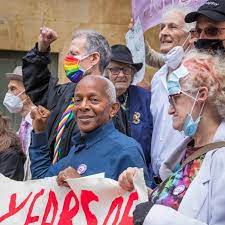
Looking Back With Pride
“After Stonewall, it was like the sun had come out,” recalls David, 75, in Looking Back With Pride, part of British Vogue’s second annual Pride video series celebrating LGBTQIA+ communities. In the affecting short film, David, Peggy, 73, Ted, 71, and 69-year-old Adele reflect on their memories of coming out, the remarkable change they’ve witnessed in their lifetimes, their hopes for the future, and what they’d like to tell their younger selves. “I’m optimistic about the future because I’ve seen what can be achieved,” says Ted. “We overturned almost 2,000 years of homophobia. We’re determined to fight, and I know that we will win.”

Pride Radio Shows & Top 10’s
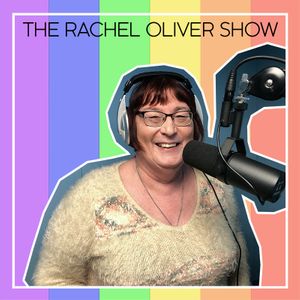
Pride 2021
Rachel Oliver presents a transgender themed music show for those who are trans themselves, those who are allies of the trans community and those who simply want to learn more about the trans community, which includes facts, stories and some amazing songs! Listen here

LGBT+ Musicians: 10 Pioneering Artists
Whether standing firm against adversity, fighting for rights and medical research, or providing a platform for those whose voices were hitherto unheard, these pioneering LGBT+ musicians have added their own splash of colour to the walls of popular music’s everlasting corridors. Listen here
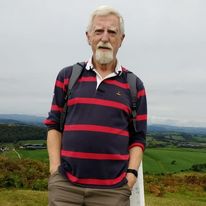
10. Dusty Springfield – Arrested By You
9. Janis Ian – At Seventeen
8. Joan Armatrading – Love and Affection
7. Melissa Etheridge – Bring Me Some Water
6. Rufus Wainwright – Going To A Town
5. Labi Siffre – So Strong
4. George Michael – Faith
3. Elton John – Tiny Dancer
2. Jimmy Somerville – For A Friend
1. Years & Years – King
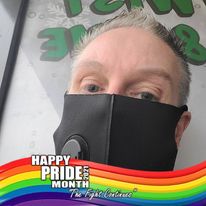
10. Michael Bolton – How Am I Supposed To Live Without You
9. Take That – Why Can’t I Wake Up With You
8. U2 – Drowning Man
7. ABC – Poison Arrow
6. Donna Summer – This Time I Know It’s For Real
5. Pet Shop Boys – King Of Rome
4. Spice Girls – 2 Become 1
3. Men at Work – Dr Heckyll and Mr Jive
2. George Michael – Careless Whispers
1. Bronski Beat – Why?




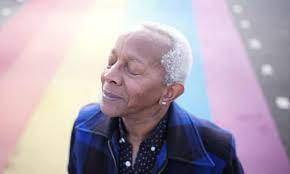
Fascinating reading – thank you
Rev David Austin
Get Outlook for iOS ________________________________
LikeLiked by 1 person
The Ted Brown article was moving and fascinating. Inspiring how someone who battled racism and homophobia is now standing shoulder to shoulder with the trans community.
LikeLiked by 1 person
An excellent article Tony. Loved your music choices too, but couldn’t get past ‘Your Song’: suddenly stopped. Probably my phone????. Patrick x
Get Outlook for Android ________________________________
LikeLiked by 1 person
FYInfo: & Circulation
Rev’d David Austin Oldham Pride
LikeLike